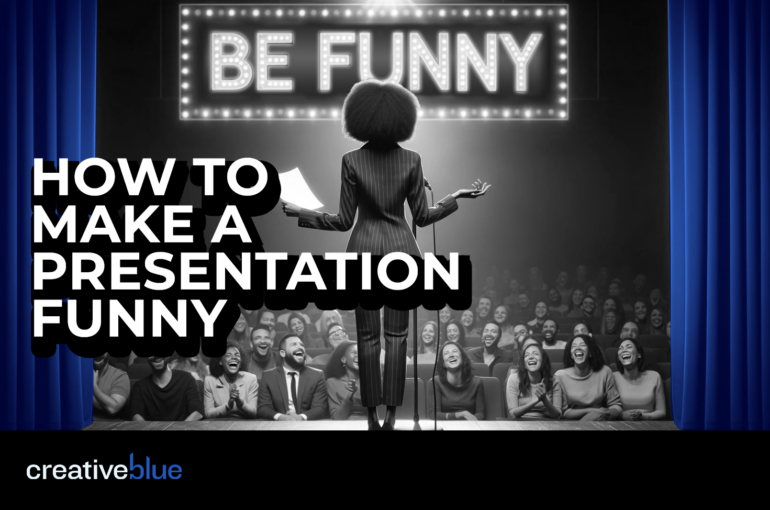How to Make a Presentation Funny
How to Make a Presentation Funny

Let’s rip the bandaid off quickly: We can’t make you funny.
As a creative agency, sometimes we get asked by executives to make their presentation “cheeky” or funny. But it’s a little more complicated than that.
We can point you into the right direction, though.
The thing is, humor is not exactly a skill like programming or designing a keynote. Humor is knowing what other people might be feeling or thinking, and poking fun at that. It’s more of an understanding of perception than a specific skill.
That can sound abstract. But all it means, basically, is that humor is the ability to recognize the situation for what it is and to be able to put everyone at ease by making light of it. This automatically builds trust.
Quick example: if you’re a highly technical software company making solutions for other software, you might say, “Look, this ain’t SpaceX. We’re not sending rockets to Mars here.”
That’s a silly example, but it helps illustrate the main reason we can’t make you be funny. Whatever we might come up with will probably be offensive to you (sorry). So, usually, it has to come from you. You have to reflect on what your company is, and what people probably already think of you.
You need to understand the context of the marketplace and where you fit in it. Humor is a way of showing you also see what other people see.
This might feel needlessly masochistic. Most executives won’t poke fun at themselves because they’re afraid they’ll lose respect. That’s why it’s so hard to be funny! But, if you manage it, even a little, it builds a ton of trust. So it’s always worth it.
If you lightly poke fun at whatever perception people have of you, it’s going to release tension in the room. People are going to laugh. Laughter means winning.
See, the paradox of humor is that by going low – by being a little self-deprecating — you’re actually elevated in the eyes of the people watching you.
This is something that great performers and great speakers know intuitively. Mostly, they don’t have to explain it to themselves in a blog post like this. They just have a sense for it. But it can be helpful to lay it out so that you can start to get an intuition for how to do it, too.
Yes, anyone can get much better at this. People have. You can watch speakers like Jeff Bezos get much funnier over his career, or even Mark Zuckerberg, who was robotic and awkward, get a little bit more loose and funny as he develops as a leader.
The important takeaway, though, is that you can’t just insert humor into a presentation like a spreadsheet. It’s more like a shift in attitude. Maybe in a small one, but an overall shift to make light of certain aspects of your enterprise so that people can relax and then lean in to the value that you truly have to offer.
That’s the other thing that’s at stake. If you’re too overly serious about your flaws, when you really do have something of value to offer, people have a hard time hearing it. Being able to poke at your flaws allows us to actually recognize and appreciate your strengths.
Humor is very important for building trust, and trust is very important for making deals.
There are two things going on here:
- Poking fun at people’s perception of you (what you have here now)
- Understanding the landscape: the industry, recent events, competitors. Getting the context of how what you’re presenting fits in the world
So, learning how to be humorous is important, but we can’t just stick it in your presentation like a TAM slide.
Instead, we guide you through speaker coaching and make that leap of faith feel a little bit more natural. It can start small.
Give us a shout if you’re struggling with humor, and we’ll coach you through it (our CEO, Chris, has some really bad dad jokes he wants to tell you about).
